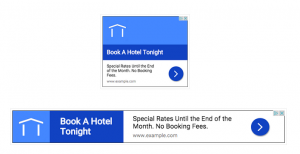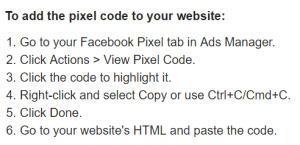By Britni McCotter, Published November 12, 2014
Consumers are bored. Attention spans are short. People are tired of the sales pitch.
We content marketers have all heard those things by now. Today’s consumer craves something more than ads, something that allows them to be part of the brand’s bigger picture.
I don’t know about you, but even on a personal level, I’m tired of advertisements, articles, tweets and videos that tell me exactly what I should buy and why.
I am not alone in this sentiment, as evidenced by the very rise of the content marketing industry over the last few years. Content marketing allows brands to create and build a relationship with consumers outside of the traditional sales process.
But when that content feels “salesy” or forceful, consumers (or worse, fans) will get bored and move on, ultimately leaving your entire brand behind.
For example, think of the weekly sales flyers you get in the mail each week. It probably won’t surprise you to learn that only 3 percent of these mailers induce a response. For the other 97 percent, they either don’t feel like being advertised to or don’t see any product or deal that inspires an immediate response. Either way, your brand has made no impact on that consumer, and they are unlikely to remember you.
Overly-branded content has the same effect. Consumers recognize it is as the same old thing.
This is why “storytelling” has become such an important tenet of content marketing strategy. This technique allows brands to share their story instead of selling it.
Good storytelling should inspire and engage consumers without a single brand mention. Here are some tips for doing just that:
1. Encourage viewers to get involved.
Brands should create an experience where users, fans and loyalists can intermingle with the brand. This can be done best through interactive options like rich media or social campaigns.
What’s the biggest benefit to getting your users involved? It enlists those same users to be storytellers of your brand, as well.
2. Keep it fresh.
Mailers are all the same, regardless of demographic, gender, income, etc… Avoid that blanket effect in your digital storytelling campaigns by exploring the wide world of consumer interests and preferences.
For example, try a variety of formats for your content. Formats like visual, video and text provide an integrated experience without pigeonholing or diluting your brand.
This also includes taking some risks with your content: publish a video without a single shred of branding, or if you’re not ready for that leap, produce a piece of content that shows the candid side of your brand’s personality.
3. Keep it tight.
Experimenting with formats doesn’t mean you should throw caution to the wind and start a content format frenzy. After all, content marketers must finely attune every last bit of a campaign: timing, distribution, seasonal trends, the list goes on. Start with a small, powerful idea, and expand only with careful planning.
For example, when Beats Music launched, it created a simple message to explain their brand goal, what users can expect, and why everyone should engage with Beats. Narrated by Nine Inch Nails front man Trent Reznor, Beats’ story provided users with just enough intrigue to download.
Beats then took this simple story and expanded it into supporting content featuring musicians and athletes who encouraged a large community with similar aspirations. A Beats user can even listen to a Beats playlist curated by the musician or athlete whose story they just heard. Above all, Beats does not sell through sales pitches – it sells by telling stories.
When you consider Beats raked in 1,000 new paying subscribers per day in its first month, this was certainly a success.
Above all, successful storytelling is exactly that: selling through stories, not ads. In other words, don’t tell your consumers what to do, but absolutely do let them be a part of your story.
Business Articles | Business 2 Community
(416)






